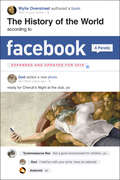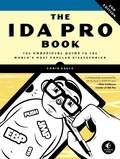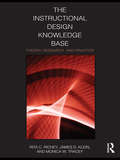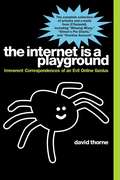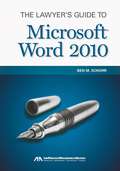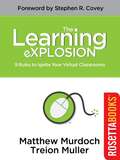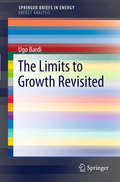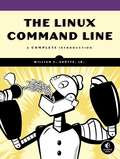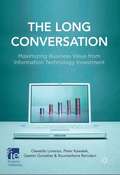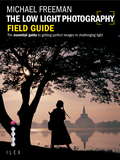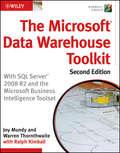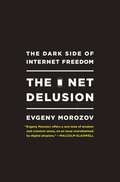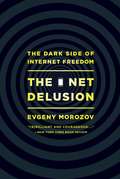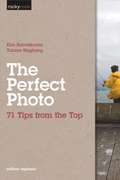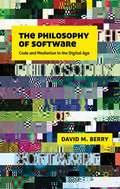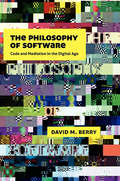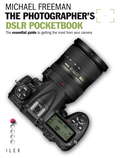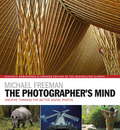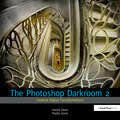- Table View
- List View
The History of the World According to Facebook, Revised Edition
by Wylie OverstreetA revised and expanded edition of the bestselling parody that includes thirty-pages of new text, photos, and contemporary subjects—a clever and fresh historical chronicle.The Sun is now friends with Earth and 7 other planetsPluto: Not cool.What if Facebook had emerged with the Big Bang, and every historical event took place online? Imagine how we’d we see history if . . .On April 15, 1865, Abraham Lincoln updated his status: "Taking the missus to the theater"God and Stephen Hawking trolled each other in a comment war over the creation of the universe?Alexander the Great "checked into" all the countries he conqueredDonald Trump and Vladimir Putin "Liked" each other's cryptic statusesIrreverent and clever, The History of the World According to Facebook goes back through time, from the beginning of the world to the present, to cover all the major events and eras of human history, such as the Renaissance, the Industrial Revolution, and the Information Age. Wylie Overstreet brings the book up to date with three-dozen pages of additional material on contemporary figures and topics, from Caitlin Jenner to Deflategate to MAGA and Trump.Filled with hundreds of actual figures from across the centuries and thousands of invented statuses, comments, and actions lampooning Facebook users’ penchant for oversharing, abbreviation, self-importance, and lazy jargon, The History of the World According to Facebook defies all attempts at taking the multi-billion user social media platform SRSLY. It is the funniest parody of history and the dawn of man since, well, the dawn of man.
The IDA Pro Book: The Unofficial Guide to the World's Most Popular Disassembler (Second Edition)
by Chris Eagle<P>No source code? No problem. With IDA Pro, the interactive disassembler, you live in a source code-optional world. IDA can automatically analyze the millions of opcodes that make up an executable and present you with a disassembly. But at that point, your work is just beginning. With The IDA Pro Book, you'll learn how to turn that mountain of mnemonics into something you can actually use. <P>Hailed by the creator of IDA Pro as "profound, comprehensive, and accurate," the second edition of The IDA Pro Book covers everything from the very first steps to advanced automation techniques. You'll find complete coverage of IDA's new Qt-based user interface, as well as increased coverage of the IDA debugger, the Bochs debugger, and IDA scripting (especially using IDAPython). But because humans are still smarter than computers, you'll even learn how to use IDA's latest interactive and scriptable interfaces to your advantage. <P>Save time and effort as you learn to: <br>–Navigate, comment, and modify disassembly <br>–Identify known library routines, so you can focus your analysis on other areas of the code <br>–Use code graphing to quickly make sense of cross references and function calls <br>–Extend IDA to support new processors and filetypes using the SDK <br>–Explore popular plug-ins that make writing IDA scripts easier, allow collaborative reverse engineering, and much more <br>–Use IDA's built-in debugger to tackle hostile and obfuscated code <P>Whether you're analyzing malware, conducting vulnerability research, or reverse engineering software, a mastery of IDA is crucial to your success. Take your skills to the next level with this 2nd edition of The IDA Pro Book.
The Indian Periodical Press and the Production of Nationalist Rhetoric
by Sukeshi KamraConsiders the Indian periodical press as a key forum for the production of nationalist rhetoric. It argues that between the 1870s and 1910, the press was the place in which the notion of 'the public' circulated and where an expansive middle class, and even larger reading audience, was persuaded into believing it had force.
The Information Diet
by Clay A. JohnsonThe modern human animal spends upwards of 11 hours out of every 24 in a state of constant consumption. Not eating, but gorging on information ceaselessly spewed from the screens and speakers we hold dear. Just as we have grown morbidly obese on sugar, fat, and flour--so, too, have we become gluttons for texts, instant messages, emails, RSS feeds, downloads, videos, status updates, and tweets. We're all battling a storm of distractions, buffeted with notifications and tempted by tasty tidbits of information. And just as too much junk food can lead to obesity, too much junk information can lead to cluelessness. The Information Diet shows you how to thrive in this information glut--what to look for, what to avoid, and how to be selective. In the process, author Clay Johnson explains the role information has played throughout history, and why following his prescribed diet is essential for everyone who strives to be smart, productive, and sane. In The Information Diet, you will: Discover why eminent scholars are worried about our state of attention and general intelligence Examine how today's media--Big Info--give us exactly what we want: content that confirms our beliefs Learn to take steps to develop data literacy, attention fitness, and a healthy sense of humor Become engaged in the economics of information by learning how to reward good information providers Just like a normal, healthy food diet, The Information Diet is not about consuming less--it's about finding a healthy balance that works for you
The Instructional Design Knowledge Base
by Rita C. Richey James D. Klein Monica W. TraceyThe Instructional Design Knowledge Base: Theory, Research and Practice provides ID professionals and students at all levels with a comprehensive exploration of the theories and research that serve as a foundation for current and emerging ID practice. This book offers both current and classic interpretations of theory from a range of disciplines and approaches. It encompasses general systems, communication, learning, early instructional, media, conditions-based, constructivist design and performance-improvement theories. Features include: rich representations of the ID literature concise theory summaries specific examples of how theory is applied to practice recommendations for future research a glossary of related terms a comprehensive list of references. A perfect resource for instructional design and technology doctoral, masters and educational specialist certificate programs, The Instructional Design Knowledge Base provides students and scholars with a comprehensive background for ID practice and a foundation for future ID thinking.
The Internet Is a Playground: Irreverent Correspondences of an Evil Online Genius
by David ThorneFeaturing all of Thorne's viral success, including "Missing Missy", The Internet Is a Playground culls together every article and e-mail from Thorne's wildly popular website 27bslash6.com, as well as enough new material, available only in these pages, to keep you laughing--and, indeed, crying--until Thorne's next stroke-of-genius prank. Or hilarious hoax. Or well-publicized almost-stint in jail (really).
The Landscape Photographer's Field Guide: Capturing the Great Outdoors with your Digital SLR Camera
by Carl Heilman IILandscape photography remains one of the most popular genres for enthusiast and commercial photographers alike, but all of the books on the market are large in format and unsuited to use in the field. This latest addition to Ilex's popular Field Guide series meets this need perfectly, with Carl Heilman's unique expertise and brilliant photos presented for the first time in a go-anywhere format.Covering key areas like equipment, exposure, weather and post-processing, and with a handy ready-reference section in the back of the book, The Landscape Photography Field Guide will become an essential companion on any shooting trip.
The Lawyer's Guide to Microsoft® Word 2010
by Ben M. SchorrThis handy reference includes clear explanations, legal-specific descriptions, and time-saving tips for getting the most out of Microsoft Word®--and customizing it for the needs of today's legal professional. Focusing on the tools and features that are essential for lawyers in their everyday practice, The Lawyer's Guide to Microsoft® Word 2010 explains in detail the key components to help make you more effective, more efficient, and more successful.
The Learning Explosion
by Treion Muller Matthew MurdochMaking the move to online teaching and learning can be challenging, and professionals and laypeople alike want to know the best ways to accomplish the switchover without sacrificing the quality of the material that is being taught. The ultimate challenge is how one transfers the in-person teaching experience and to retain the quality of that experience in the online world in a way that maintains its original integrity. Ultimately what we want is an experience that is challenging and just as engaging as the experience one would get in a live classroom. This book helps readers learn how to transfer their in-person classroom experience and skills to the virtual classroom.
The Limits to Growth Revisited
by Ugo Bardi"The Limits to Growth" (Meadows, 1972) generated unprecedented controversy with its predictions of the eventual collapse of the world's economies. First hailed as a great advance in science, "The Limits to Growth" was subsequently rejected and demonized. However, with many national economies now at risk and global peak oil apparently a reality, the methods, scenarios, and predictions of "The Limits to Growth" are in great need of reappraisal. In The Limits to Growth Revisited, Ugo Bardi examines both the science and the polemics surrounding this work, and in particular the reactions of economists that marginalized its methods and conclusions for more than 30 years. "The Limits to Growth" was a milestone in attempts to model the future of our society, and it is vital today for both scientists and policy makers to understand its scientific basis, current relevance, and the social and political mechanisms that led to its rejection. Bardi also addresses the all-important question of whether the methods and approaches of "The Limits to Growth" can contribute to an understanding of what happened to the global economy in the Great Recession and where we are headed from there.
The Linux Command Line: A Complete Introduction
by William E. Shotts<P>You've experienced the shiny, point-and-click surface of your Linux computer—now dive below and explore its depths with the power of the command line. <P>The Linux Command Line takes you from your very first terminal keystrokes to writing full programs in Bash, the most popular Linux shell. Along the way you'll learn the timeless skills handed down by generations of gray-bearded, mouse-shunning gurus: file navigation, environment configuration, command chaining, pattern matching with regular expressions, and more. <P>In addition to that practical knowledge, author William Shotts reveals the philosophy behind these tools and the rich heritage that your desktop Linux machine has inherited from Unix supercomputers of yore. <P>As you make your way through the book's short, easily-digestible chapters, you'll learn how to: <br>–Create and delete files, directories, and symlinks <br>–Administer your system, including networking, package installation, and process management <br>–Use standard input and output, redirection, and pipelines <br>–Edit files with Vi, the world’s most popular text editor–Write shell scripts to automate common or boring tasks–Slice and dice text files with cut, paste, grep, patch, and sed <P>Once you overcome your initial "shell shock," you'll find that the command line is a natural and expressive way to communicate with your computer. Just don't be surprised if your mouse starts to gather dust.
The Long Conversation
by Oswaldo LorenzoFor many years companies have been investing in enterprise systems and IT initiatives butthey are now struggling to achieve the desired results. It takes a long time to make the best of your enterprise systems so businesses must stop looking for the next technology 'silver bullet' and instead maximize the value of existing IT investments. "
The Low Light Photography Field Guide: Go Beyond Daylight To Capture Stunning Low Light Images (Field Guide Ser.)
by Michael FreemanLike all the titles in this successful series, The Low Light Photography Field Guide offers advice from a respected expert and professional. In this volume, Michael Freeman looks at an area that remains problematic for photographers with even top-of-the range equipment: low light.Opening with a section on the qualities of different kinds of low light, the book then deals with ways of overcoming gloomy situations, whether you're shooting hand-held or on a tripod. Post-production fixes are also covered, allowing the reader to turn difficult shots into amazing images.
The Microsoft Data Warehouse Toolkit
by Joy Mundy Ralph Kimball Warren ThornthwaiteBest practices and invaluable advice from world-renowned data warehouse experts In this book, leading data warehouse experts from the Kimball Group share best practices for using the upcoming "Business Intelligence release" of SQL Server, referred to as SQL Server 2008 R2. In this new edition, the authors explain how SQL Server 2008 R2 provides a collection of powerful new tools that extend the power of its BI toolset to Excel and SharePoint users and they show how to use SQL Server to build a successful data warehouse that supports the business intelligence requirements that are common to most organizations. Covering the complete suite of data warehousing and BI tools that are part of SQL Server 2008 R2, as well as Microsoft Office, the authors walk you through a full project lifecycle, including design, development, deployment and maintenance. Features more than 50 percent new and revised material that covers the rich new feature set of the SQL Server 2008 R2 release, as well as the Office 2010 release Includes brand new content that focuses on PowerPivot for Excel and SharePoint, Master Data Services, and discusses updated capabilities of SQL Server Analysis, Integration, and Reporting Services Shares detailed case examples that clearly illustrate how to best apply the techniques described in the book The accompanying Web site contains all code samples as well as the sample database used throughout the case studies The Microsoft Data Warehouse Toolkit, Second Edition provides you with the knowledge of how and when to use BI tools such as Analysis Services and Integration Services to accomplish your most essential data warehousing tasks.
The Net Delusion
by Evgeny Morozov"The revolution will be Twittered!" declared journalist Andrew Sullivan after protests erupted in Iran in June 2009. Yet for all the talk about the democratizing power of the Internet, regimes in Iran and China are as stable and repressive as ever. In fact, authoritarian governments are effectively using the Internet to suppress free speech, hone their surveillance techniques, disseminate cutting-edge propaganda, and pacify their populations with digital entertainment. Could the recent Western obsession with promoting democracy by digital means backfire? In this spirited book, journalist and social commentator Evgeny Morozov shows that by falling for the supposedly democratizing nature of the Internet, Western do-gooders may have missed how it also entrenches dictators, threatens dissidents, and makes it harder--not easier--to promote democracy. Buzzwords like "21st-century statecraft" sound good in PowerPoint presentations, but the reality is that "digital diplomacy" requires just as much oversight and consideration as any other kind of diplomacy. Marshaling compelling evidence, Morozov shows why we must stop thinking of the Internet and social media as inherently liberating and why ambitious and seemingly noble initiatives like the promotion of "Internet freedom" might have disastrous implications for the future of democracy as a whole.
The Net Delusion
by Evgeny Morozov"The revolution will be Twittered!" declared journalist Andrew Sullivan after protests erupted in Iran in June 2009. Yet for all the talk about the democratizing power of the Internet, regimes in Iran and China are as stable and repressive as ever. In fact, authoritarian governments are effectively using the Internet to suppress free speech, hone their surveillance techniques, disseminate cutting-edge propaganda, and pacify their populations with digital entertainment. Could the recent Western obsession with promoting democracy by digital means backfire? In this spirited book, journalist and social commentator Evgeny Morozov shows that by falling for the supposedly democratizing nature of the Internet, Western do-gooders may have missed how it also entrenches dictators, threatens dissidents, and makes it harder--not easier--to promote democracy. Buzzwords like "21st-century statecraft" sound good in PowerPoint presentations, but the reality is that "digital diplomacy" requires just as much oversight and consideration as any other kind of diplomacy. Marshaling compelling evidence, Morozov shows why we must stop thinking of the Internet and social media as inherently liberating and why ambitious and seemingly noble initiatives like the promotion of "Internet freedom" might have disastrous implications for the future of democracy as a whole.
The Net Delusion: The Dark Side of Internet Freedom
by Evgeny MorozovEvgeny Morozov offers a rare note of wisdom and common sense, on an issue overwhelmed by digital utopians.
The Office Specialist
by The Office Specialist.com staffA workbook designed for middle and high school computer applications students who require Microsoft Office Software applications and its curriculum.
The Perfect Photo
by Elin Rantakrans Tobias Hagberg"Perfect" is a purely subjective term when it comes to art. A journey toward the perfect photo is a journey without a defined destination. There are photographs that are technically perfect and others that stand out because of their message or composition. Although the perfect photo remains a matter of taste, it is still something every photographer strives for. With this volume, Elin Rantakrans and Tobias Hagberg provide the beginning to intermediate photographer a wide range of practical tips that cover capture, composition, and editing--all with the aim of helping you achieve better photos. Each concept is illustrated with beautiful, inspiring images. Our promise: Use 7 of these 70 tips and you will be a 10% better photographer. Try it!
The Philosophy of Software
by David M. BerryThis book is a critical introduction to code and software that develops an understanding of its social and philosophical implications in the digital age. Written specifically for people interested in the subject from a non-technical background, the book provides a lively and interesting analysis of these new media forms.
The Philosophy of Software: Code and Mediation in the Digital Age
by D. BerryThis book is a critical introduction to code and software that develops an understanding of its social and philosophical implications in the digital age. Written specifically for people interested in the subject from a non-technical background, the book provides a lively and interesting analysis of these new media forms.
The Photographer's DSLR Pocketbook: The Essential Guide to Getting the Most from your Camera (Field Guide Ser.)
by Michael FreemanDigital SLR cameras have manuals running to hundreds of pages, concentrating on technical features, but neglecting the fact that great photographers not only know how to navigate menus: they understand how the operation of their camera will help them to take better pictures. 'The Photographer's DSLR Pocketbook' gives the reader the benefit of Michael Freeman's decades of professional photography and years of experience with digital technology. Opening with the anatomy of a digital SLR, the book then covers settings, exposure, capture and image workflow, clarifying the operations of your camera and allowing you to operate it with speed, confidence and accuracy.
The Photographer's Exposure Field Guide
by Michael FreemanFirst published in 2011. Routledge is an imprint of Taylor & Francis, an informa company.
The Photographer's Mind Remastered: Creative Thinking for Better Digital Photos (The Photographer's Eye #8)
by Michael FreemanYou've done your research. You've bought your camera. You've learnt how to use it. Now what? The secret behind a good photograph is not your camera. It's not even the scene viewed through the viewfinder. It's the mind of the photographer which turns an average photograph into an exceptional one. In The Photographer's Mind, professional photographer and author Michael Freeman unravels the mystery behind the creation of a photograph and reveals how to capture photos that really make you feel something.The aim of this book is to answer what makes a photograph great, and explore the ways that top photographers achieve this goal time and time again. The Photographer's Mind will provide you with invaluable knowledge on:· Avoiding cliché· The recurring nature of trends· Style and composition· Capturing light· How to handle the unexpected
The Photoshop Darkroom 2: Creative Digital Transformations
by Harold DavisAward-winning photography/design team Harold and Phyllis Davis are back with a brand new volume in their new Photoshop Darkroom series. Picking up where their best-selling first book left off, The Photoshop Darkroom 2: Advanced Digital Post-Processing will show you everything you need to know to take your digital imaging skills to the next level. Great photographers know that the best images begin well before the shutter clicks, and certainly well before Photoshop boots up. Harold takes a step back, and shares his helpful tips for capturing the most compelling images possible by keeping in mind what type of post-processing you'll do before you start shooting. You'll also find complete coverage of important topics such as compositing, working with layers, and HDR. Packed with tons of eye-popping images which have won Harold national acclaim, this is a fantastic resource for photographers who want to think outside the box and create truly stunning artwork.
